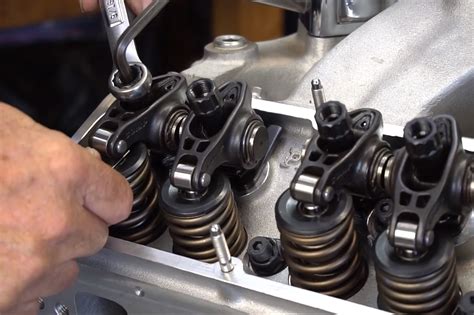350 Chevy Performance Upgrades: Start with Valve Adjustment
The legendary 350 small-block Chevy engine is a favorite for its power potential and widespread availability. Whether you're restoring a classic or building a hot rod, unlocking its performance requires a strategic approach. While many focus on big-ticket items like camshafts and carburetors, a foundational step often overlooked is proper valve adjustment. This seemingly minor procedure can significantly impact your engine's performance, efficiency, and longevity. Let's delve into why valve adjustment is crucial and how to tackle it.
Why Valve Adjustment is Your First Performance Upgrade
Before exploring more aggressive performance modifications, ensuring your valves are correctly adjusted is paramount. Improper valve adjustment leads to a cascade of negative effects:
- Reduced Power: Incorrect clearance prevents the valves from opening or closing fully. This directly translates to reduced power output, hindering the engine's ability to breathe efficiently.
- Decreased Fuel Efficiency: Inefficient combustion due to improper valve timing impacts fuel economy, leading to wasted fuel and increased running costs.
- Premature Wear: Incorrect valve lash can cause excessive wear on valve components, including the valve seats, stems, and rocker arms. This leads to premature engine failure and costly repairs.
- Engine Noise: Excessive valve clatter is a clear indicator of improper adjustment and can lead to further damage if left unaddressed.
How to Perform a Valve Adjustment on a 350 Chevy
Performing a valve adjustment requires precision and attention to detail. Here's a step-by-step guide:
1. Gather Your Tools: You'll need a valve adjustment tool (feeler gauges), a socket wrench set, a torque wrench, a timing light (optional, for precise TDC confirmation), and a shop manual specific to your engine.
2. Access the Valves: Remove the valve covers to expose the rocker arms and valves. Consult your shop manual for specific instructions on removing the valve covers for your engine variant.
3. Locate Top Dead Center (TDC): Using the timing marks on your crankshaft pulley and timing cover, locate the top dead center position for the #1 cylinder on the compression stroke. This is crucial for accurate valve adjustment. A timing light can aid in precise TDC confirmation.
4. Adjust the Valves: With the engine at TDC, use the appropriate feeler gauge to check the valve lash for each valve (intake and exhaust). Your shop manual will specify the correct clearance for your specific engine and camshaft. Adjust the rocker arm screws to achieve the correct clearance.
5. Repeat for All Cylinders: Rotate the engine, following the firing order, to reach the TDC position for each cylinder and repeat the adjustment procedure. Remember to always double-check your work.
6. Reinstall Valve Covers: Once all valves are adjusted, carefully reinstall the valve covers and tighten them to the manufacturer's specified torque.
What is the Correct Valve Adjustment for a 350 Chevy?
The correct valve lash (clearance) for your 350 Chevy depends on the specific camshaft installed. There's no single "correct" number. Always consult your engine's shop manual or the camshaft manufacturer's specifications. This information is critical and using the wrong clearance can damage your engine.
How Often Should I Adjust My 350 Chevy's Valves?
The frequency of valve adjustments depends on several factors, including the type of camshaft, driving style, and engine wear. Generally, it's recommended to check valve adjustment during routine maintenance, such as oil changes. If you notice excessive valve clatter or a decrease in performance, a valve adjustment should be performed immediately. Many experienced mechanics suggest checking and adjusting valves every 10,000-15,000 miles.
Can I Adjust My Valves Without Removing the Rocker Arms?
While some engines allow for valve adjustment without removing the rocker arms, the 350 Chevy typically requires rocker arm removal for proper adjustment access. Refer to your engine's repair manual for detailed instructions.
What Happens If I Don't Adjust My Valves?
Ignoring valve adjustment can lead to decreased engine performance, reduced fuel economy, increased engine wear, and ultimately, potential engine damage. It's a crucial aspect of engine maintenance that should not be neglected.
By prioritizing proper valve adjustment, you'll lay a solid foundation for further performance enhancements. Remember, the small details often make the biggest difference. This simple procedure is a cost-effective way to ensure your 350 Chevy runs smoothly, powerfully, and efficiently. Remember to consult your engine's service manual for precise instructions specific to your engine. Happy wrenching!

